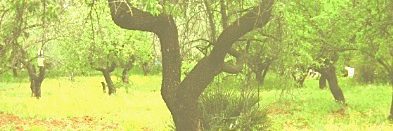I. Love. Blue. Blue — in all its tones and gradations — is my favourite colour. And when mixed with green — another favourite — I love it even more. It is only natural that blue flowers count among my favourites too. True blue flowers are rare apparently. Yellow and red are the most common flower colours due to their pollinators: yellow for bees, red for birds, especially hummingbirds. I wonder then how blue flowers are pollinated; by the wind, perhaps? Even those flowers that we see as blue actually have a bit of red in them. Earlier this year, scientists found that rare blue petunias get their colour from a malfunction in their plant cells’ molecular pump, resulting in increased pH and decreased acidity (http://phys.org/news/2014-01-roses-redwhy-petunias-blue.html). With this new insight, plant developers may come up with many, many more blue flowers and they will perhaps no longer be a rarity. No matter, naturally blue flowers will always have pride of place in my garden and in my heart.
Today I am thankful that my eyes, despite myopia since childhood, can perceive and enjoy this wonderful colour, and many other marvellous colours besides. Asters are at their most glorious at this time of year, and they range from pale blue to deep purplish blue and reddish purple. I love them and am grateful to them, as one of the flowers that my mother loved was a dainty flowered, blueish-mauve Estrella, or aster.
A blue flower that loved the conditions in my garden in the UK is monkshood, Aconitum napellus. It is also known as aconite or wolfsbane, having been used to poison wolves in earlier times. It is well known as a poisonous flower, but certain species are used in very dilute dosages as a sedative in Traditional Chinese Medicine and Ayurveda (see note below).
The one blue flower that truly delights me not only for its colour but its name is Love in a Mist, Nigella damascena. Once in the garden, if allowed to seed, you have it with you forever. It is another carefree plant for naturalistic planting. The tiny black seeds of a relative, Nigella sativa, are much used to decorate and flavour Middle Eastern and South Asian foods.
And last but not the least of my favourite blues: hydrangeas. I have two large bushes which I got as small plants two years ago and now, when in bloom, they are taller than me. These plants are also carefree. Except for the occasional nibble from slugs or snails, which I ignore and don’t treat with slug bait, not even a slug bar (beer), I am thankful for these splendid and reliable plants that bloom from late spring until late autumn. I keep most of the spent flowers on the bushes, and only prune them off in the spring when new growth begins. The flowers protect the bush against the worst of the winter cold and frosts. The flowers turn the most spectacular tones of red – from pink to purple – and green also sneaks its way in. Some of the flowers I make into autumn wreaths to brighten up the front door and house during winter.
I am thankful to be able to delight in the sight of these blue flowers. To be able to grow some of them and enjoy them throughout their peak of bloom is such a blessing, and for all these I am grateful.
Most of all, I am thankful for nature’s biodiversity and bounty, and for the Supreme Creator, who has gifted us with all these flowers in their infinitely marvellous forms, all in just the one colour, my favourite – blue.
__________
N.B. Please note that this is not an endorsement to self-medicate with aconite, sometimes promoted unscrupulously as herbal Valium. Many poisonous plants are the bases for historical and modern medicines. The dose makes the poison, as Paracelsus once said: “Alle Dinge sind Gift und nichts ist ohne Gift, allein die Dosis macht es, dass ein Ding kein Gift ist.” All things are poison[ous] and nothing is without poison, only the dose makes it so, that a thing is not poison. Thus, even the most innocuous of foods — such as water, when too much of it is ingested in too short a time — can be harmful to the body.





Keep writing, and have a wonderful Sunday! 🙂
LikeLike
Thank you, dear Murasaki Shikubu! Arigatou gozaimasu! Gambarimasu!
LikeLike